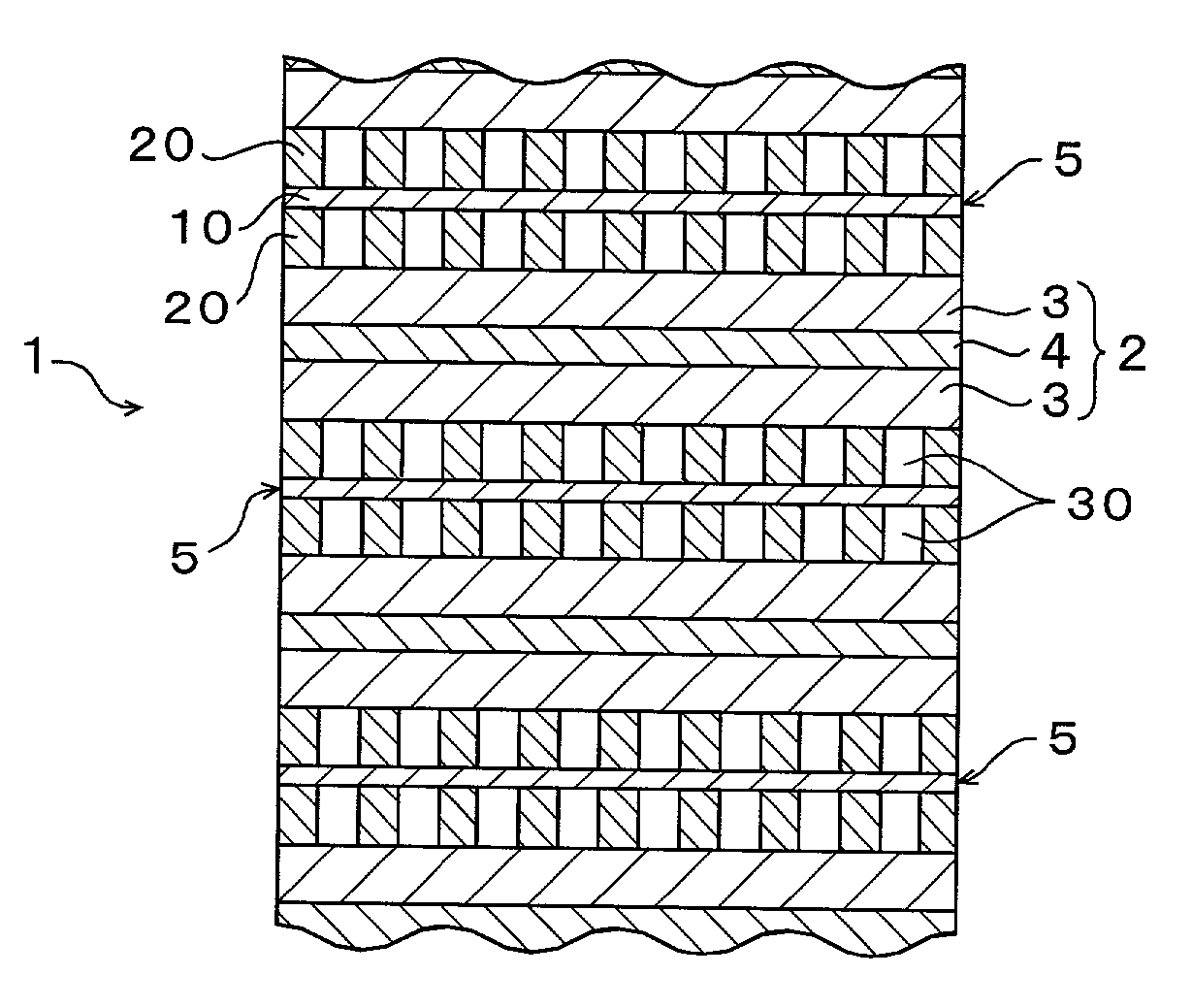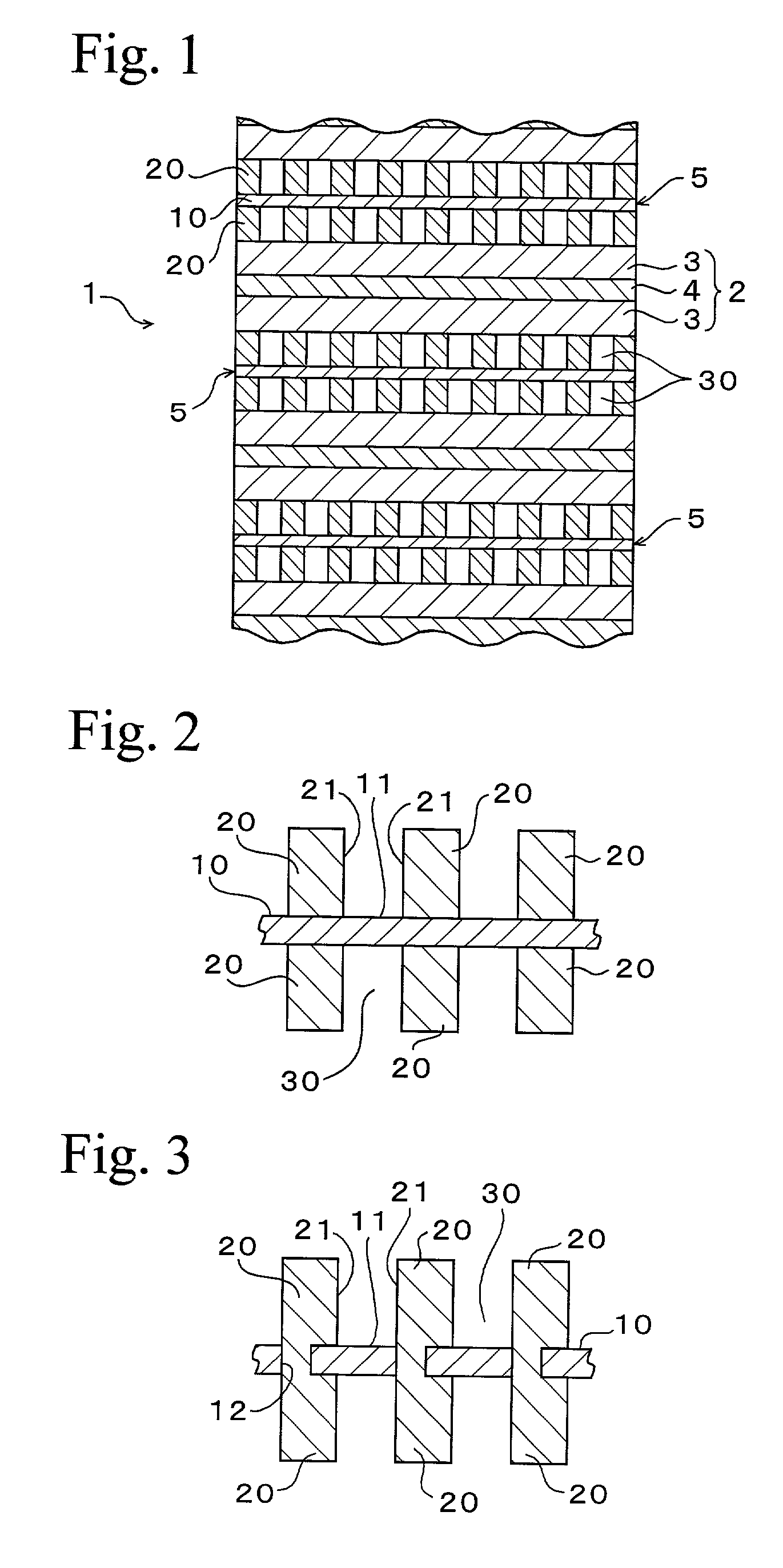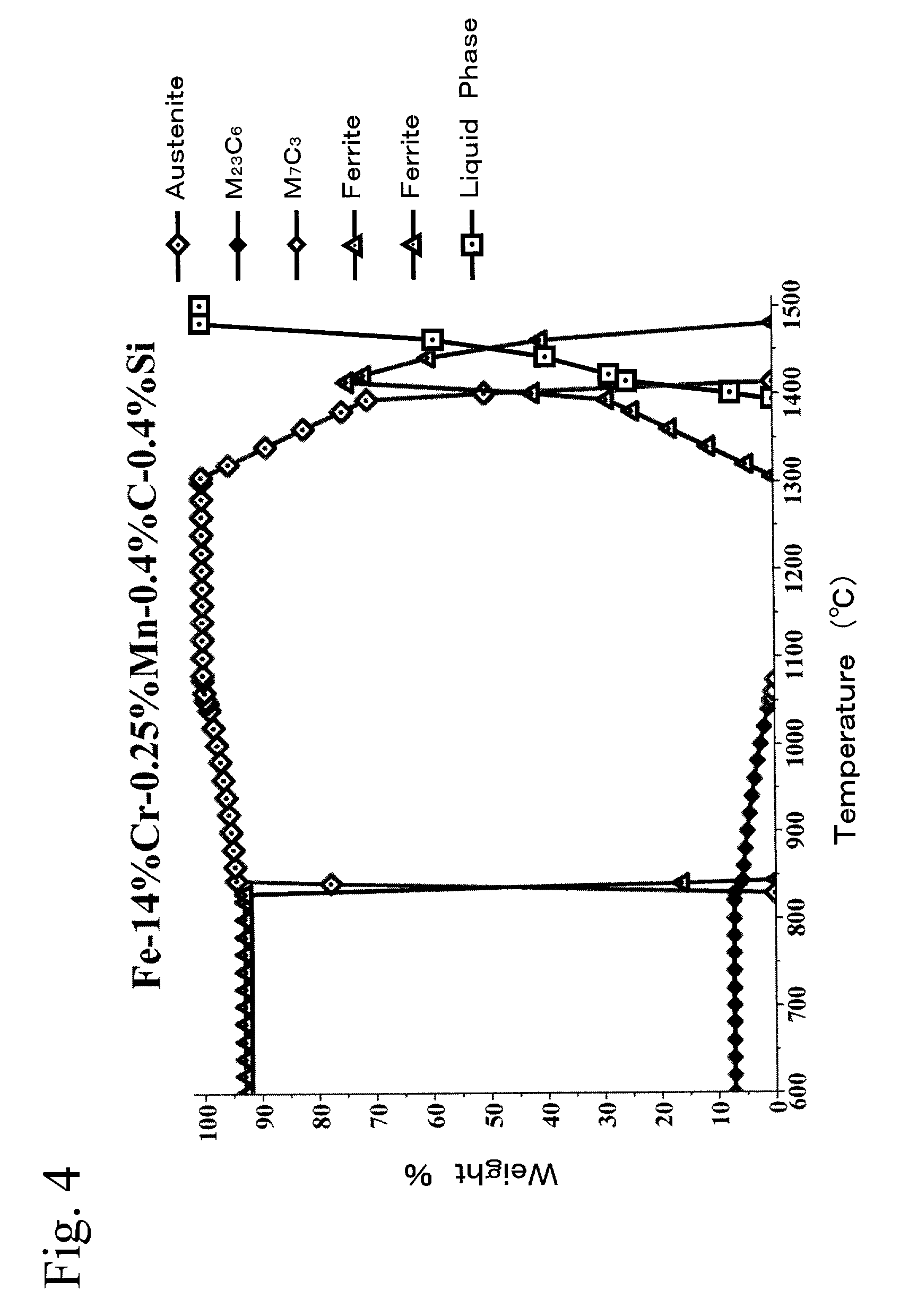Separator for fuel cell
a fuel cell and separator technology, applied in the direction of cell components, electrochemical generators, cell component details, etc., can solve the problems of large labor and expense, carbon type and metal type materials, and uneven product sizes
- Summary
- Abstract
- Description
- Claims
- Application Information
AI Technical Summary
Benefits of technology
Problems solved by technology
Method used
Image
Examples
Embodiment Construction
[0029] The advantages of the invention will be confirmed by examples of the invention.
[0030] Several kinds of stainless steels were subjected to two heat treatments (first and second heat treatment) and were subjected to an acid treatment thereafter, and metallic plates for separators of Examples 1 to 5 were obtained. The initial contact resistance and contact resistance after deterioration of the metallic plates were measured. The kinds of stainless steel, the conditions in the heat treatment and the acid treatment, and the resistances are shown in Table 1. As shown in Table 1, several kinds of stainless steels without acid treatment after heat treatment were obtained as metallic plates for separators of Comparative Examples 1 to 9.
1 TABLE 1 Carbon / Metal Metal / Metal Initial Contact Contact Resistance Initial Contact Contact Resistance First Heat Second Heat Acid Resistance after Deterioration Resistance after Deterioration Material Treatment Treatment Treatment (m.OMEGA. .multidot....
PUM
 Login to View More
Login to View More Abstract
Description
Claims
Application Information
 Login to View More
Login to View More - R&D
- Intellectual Property
- Life Sciences
- Materials
- Tech Scout
- Unparalleled Data Quality
- Higher Quality Content
- 60% Fewer Hallucinations
Browse by: Latest US Patents, China's latest patents, Technical Efficacy Thesaurus, Application Domain, Technology Topic, Popular Technical Reports.
© 2025 PatSnap. All rights reserved.Legal|Privacy policy|Modern Slavery Act Transparency Statement|Sitemap|About US| Contact US: help@patsnap.com



